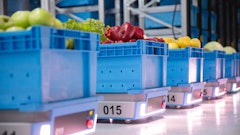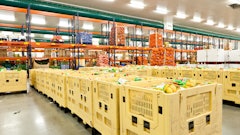
Composite-level sales across 25 U.S. grocery banners dropped 13.5% during a 12-week period ending Sept. 20 vs. the same period last year, according to a report from Brick Meets Click and sponsored by Mercatus. The year-over-year sales decline was driven by a higher rate of lapsed customers who either shifted back to in-store only or switched to a rival’s online service.
“These e-grocery benchmarks are extremely valuable to regional grocers who want to better understand how their banners’ performance and KPIs compare,” says David Bishop, partner at Brick Meets Click. “This study not only helps grocers identify opportunities to improve, but also reveals the stark realities related to growing an online grocery business in a post-COVID environment where customers have greater access to and higher expectations for e-grocery shopping.”
“Given these shifts, improving customer retention rates is vital for regional grocers. The analysis determined that it requires 2.5 new customers to replace the current value associated with one of the longest-term customers,” Bishop adds. “However, a more realistic replacement number is 3.5 new customers, given the fact that only about 30% of new customers will age to the comparable level of one lost long-term customer.”
Key takeaways:
- Of the 25 banners that participated in the study, only three bucked the downward trend, reporting a positive change in same-store online sales vs. the prior year. This result highlights how challenging the current environment is for most regional grocers while other formats, like larger big-box grocery experienced a surge in year-over-year sales growth in 2023.
- Total order volume on a same-store basis in 2023 was down 16.8% compared to a year ago. The decrease in order volume was the result of a shrinking base of active customers overall. The number of customers who completed one or more e-grocery orders in the 12 weeks during 2023 declined by 19.8% vs. the same period in 2022. And a comparison of retention rates for different customer cohorts in 2022 versus 2023 highlights that it has only gotten more challenging for regional grocers to keep their online customers active.
- The year-over-year drop in overall order volume was partially offset by the base of active customers completing more orders and spending more per order as these key metrics both grew, climbing 7.6% and 4.2% respectively in 2023 vs. the prior year.
- The longest-term customer cohort rang up nearly 30% higher average order values (AOVs) and completed twice as many orders as the newly acquired online customers.
"Insights from this report reinforce that with customer acquisition growing ever more challenging, retention has become the name of the game," says Sylvain Perrier, president and CEO of Mercatus. "To drive growth, grocers must invest in strategies that increase basket size and the frequency of orders. Helping online customers to save time with personalization, discover new products through intelligent promotional pairings, and get more value for money, such as through loyalty programs, are just some of the ways to ensure customers stick around."


























